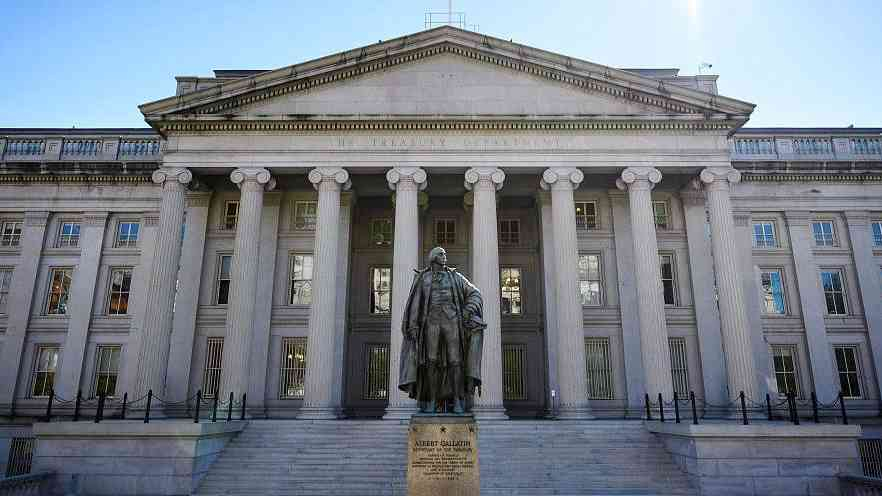
Editor's note: Bilal Jafar is an independent economist and international financial markets analyst. He holds an MBA in finance and has a special interest in writing about emerging markets and China-U.S. economic relations. The article reflects the author's views, and not necessarily those of CGTN.
President-elect Joe Biden announced his courageous economic agenda to boost the U.S. economy struggling with COVID-19 and a record federal deficit. Biden's ambitious economic plan of $7 trillion in additional spending over the next decade to uplift the nation's infrastructure faces a tough challenge, a weak U.S. dollar.
The former vice president outlined his plans to increase manufacturing output through his "made in all of America" proposal. Biden also aims to create millions of jobs to uplift the American middle class. The bold economic plan requires significant funding.
Despite his desire to support the middle class with tax reliefs and target wealthy Americans to increase income, Biden needs to get ready for the consequences of his massive spending plan on the nation's currency.
The U.S. dollar lost significant value during the Trump era due to a record federal deficit and interest rate cuts by the Federal Reserve. The U.S. Dollar Index, which tracks the performance of the greenback against a basket of foreign currencies, dropped more than 10 percent since Trump assumed office.
The U.S. dollar Index is currently trading around 90.00, its lowest level since April 2018. The recent stimulus package fueled dollar depreciation as the world's top reserve currency (at least for now) posted massive losses against the euro, yen, and Swiss franc.
$7-trillion spending plan
Biden's ambitious spending plan to boost infrastructure and create millions of middle-class jobs would require a massive rise in taxes. He announced a proposal to provide tax relief to people earning $400,000 or less and planned to raise the corporate tax rate from 21 percent to 28 percent to target wealthy Americans for tax collection.
His proposal to spend hundreds of billions of dollars on clean energy, research and development along with a plan to ease student debt looks like a doable job, but not without consequences. Biden supported a comprehensive stimulus package to help people get back to work and for businesses to reopen as soon as possible.
He is planning to spend more in case of a long economic recovery from the pandemic. Biden's ambition can't be fulfilled without raising the federal deficit which already reached $3.1 trillion in 2020, about 15.2 percent of the total GDP, the highest level since 1945.

U.S. Treasury Department in Washington, U.S., October 18, 2018. /VCG
U.S. Treasury Department in Washington, U.S., October 18, 2018. /VCG
A weaker U.S. dollar
After getting a beating during the Trump era, the U.S. dollar may well be on course to lose its value further as the tentative economic plan from the president-elect will add pressure on the greenback. Biden will keep the interest rate lower as his Treasury secretary nominee Janet Yellen, who is known for her measured approach to running the economy, will advise Biden to maintain a lower interest rate environment until the economy gets back on track.
Additionally, Biden has not been too vocal about his stance on the U.S. dollar, unlike Trump who publicly supported a weak currency to boost trade. Biden's quietness on the U.S. dollar sparked uncertainty among investors as they are unsure about how long the interest rate will be kept near zero.
Additionally, Biden's victory means the return of a conventional governance model in the U.S. with a less confrontational approach towards trade partners. It is good news for other currencies including the yuan, yen, and euro but shows a tough road ahead for the U.S. dollar as the greenback looks set to take a beating from other currencies.
The trend has been pretty evident recently as the yuan and euro reached the highest level against the U.S. dollar since May 2018. The Japanese yen has been the best performer among all currencies as the currency reached its highest level against the greenback since November 2016.
Reserve currency status in danger
In the last few years, the dollar's dominance as the world's reserve currency has taken a hit after growing concerns over the long-term health of the U.S. economy. The world's largest economy started facing challenges even before the arrival of the coronavirus pandemic due to confrontational trade policies.
In 2019, manufacturing activity in the U.S. tumbled to the lowest level in 10 years due to uncertainties regarding trade policies by the Trump administration. COVID-19 fueled the already declining sector and left many people jobless. Biden is planning to boost the economy with his massive spending plans with a possibility of stimulus 3.0 or even stimulus 4.0 if needed.
But, the key issue here is that his ambitious plans will put the status of the U.S. dollar as the world's top reserve currency in serious danger as investors are dumping dollar-denominated assets due to low returns. Global investors are preferring safe-haven assets like gold and yen to reduce dollar exposure as they are expecting further depreciation in the coming years.
Prolonged ultra-low interest rates coupled with the rising federal deficit and huge spending plans may well be the key drivers to dethrone the U.S. dollar as the world's reserve currency.
(If you want to contribute and have specific expertise, please contact us at opinions@cgtn.com.)

